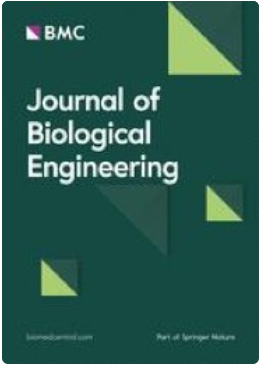Recent advances in nanomaterial-based biosensor for periodontitis detection
IF 5.7
3区 生物学
Q1 BIOCHEMICAL RESEARCH METHODS
引用次数: 0
Abstract
Periodontitis, a chronic inflammatory condition caused by bacteria, often causes gradual destruction of the components that support teeth, such as the alveolar bone, cementum, periodontal ligament, and gingiva. This ultimately results in teeth becoming loose and eventually falling out. Timely identification has a crucial role in preventing and controlling its progression. Clinical measures are used to diagnose periodontitis. However, now, there is a hunt for alternative diagnostic and monitoring methods due to the progress of technology. Various biomarkers have been assessed using multiple bodily fluids as sample sources. Furthermore, conventional periodontal categorization factors do not provide significant insights into the present disease activity, severity and amount of tissue damage, future development, and responsiveness to treatment. In recent times, there has been a growing utilization of nanoparticle (NP)-based detection strategies to create quick and efficient detection assays. Every single one of these platforms leverages the distinct characteristics of NPs to identify periodontitis. Plasmonic NPs include metal NPs, quantum dots (QDs), carbon base NPs, and nanozymes, exceptionally potent light absorbers and scatterers. These find application in labeling, surface-enhanced spectroscopy, and color-changing sensors. Fluorescent NPs function as photostable and sensitive instruments capable of labeling various biological targets. This article presents a comprehensive summary of the latest developments in the effective utilization of various NPs to detect periodontitis.基于纳米材料的牙周炎检测生物传感器的最新进展
牙周炎是一种由细菌引起的慢性炎症,通常会导致牙槽骨、骨水泥、牙周韧带和牙龈等支撑牙齿的组成部分逐渐遭到破坏。最终导致牙齿松动并脱落。及时发现牙周病对预防和控制其发展有着至关重要的作用。临床诊断牙周炎的方法有很多。然而,随着技术的进步,现在人们开始寻求其他诊断和监测方法。使用多种体液作为样本来源,对各种生物标志物进行了评估。此外,传统的牙周分类因素并不能提供关于当前疾病活动、组织损伤的严重程度和数量、未来发展以及对治疗的反应等方面的重要信息。近来,人们越来越多地利用基于纳米粒子(NP)的检测策略来创建快速高效的检测化验方法。所有这些平台都利用了纳米粒子的独特特性来识别牙周炎。质子纳米粒子包括金属纳米粒子、量子点(QD)、碳基纳米粒子和纳米酶,它们都是极强的光吸收体和散射体。这些物质可用于标记、表面增强光谱学和变色传感器。荧光 NPs 具有光稳定性和灵敏度高的特点,能够标记各种生物目标。本文全面总结了有效利用各种 NPs 检测牙周炎的最新进展。
本文章由计算机程序翻译,如有差异,请以英文原文为准。
求助全文
约1分钟内获得全文
求助全文
来源期刊

Journal of Biological Engineering
BIOCHEMICAL RESEARCH METHODS-BIOTECHNOLOGY & APPLIED MICROBIOLOGY
CiteScore
7.10
自引率
1.80%
发文量
32
审稿时长
17 weeks
期刊介绍:
Biological engineering is an emerging discipline that encompasses engineering theory and practice connected to and derived from the science of biology, just as mechanical engineering and electrical engineering are rooted in physics and chemical engineering in chemistry. Topical areas include, but are not limited to:
Synthetic biology and cellular design
Biomolecular, cellular and tissue engineering
Bioproduction and metabolic engineering
Biosensors
Ecological and environmental engineering
Biological engineering education and the biodesign process
As the official journal of the Institute of Biological Engineering, Journal of Biological Engineering provides a home for the continuum from biological information science, molecules and cells, product formation, wastes and remediation, and educational advances in curriculum content and pedagogy at the undergraduate and graduate-levels.
Manuscripts should explore commonalities with other fields of application by providing some discussion of the broader context of the work and how it connects to other areas within the field.
 求助内容:
求助内容: 应助结果提醒方式:
应助结果提醒方式:


